![10 Event Analytics Use Cases for SaaS [+ Examples] cover](https://blog-static.userpilot.com/blog/wp-content/uploads/2024/03/10-event-analytics-use-cases-for-saas_2ec1114042f145bed1a21883b21d8857_2000.png)
Event analytics is a great way for SaaS companies to study user interactions to gain actionable insights into the customer journey. Knowing what steps users take to perform an event can help uncover friction points that are ruining the customer experience.
While there are several benefits to it, performing such product analytics isn’t always easy. That’s why a good starting point is to learn from the best by going over our list of the top event-tracking use cases.
Try Userpilot Now
See Why 1,000+ Teams Choose Userpilot

Summary of event analytics use cases
- Event analytics is designed to help you analyze customer behavior and specific user interactions. From this analysis, you can draw useful insights and conclusions to create a better user experience.
- Before diving into event analytics, you need to collect the right data. Here are the different ways of collecting event data you should know:
- With the help of your engineering team, you can use APIs to collect custom event-based data.
- If you want a no-code solution, try feature tags to collect data about different interactions with UI elements.
- To study a whole process, like the onboarding flow, track multiple events by grouping them.
- Here are some commonly used event analytics use cases to help you out:
- Conduct funnel analysis to find and fix friction points so you can improve your onboarding.
- Track events to measure new feature success to understand why users are or are not adopting them.
- Perform path analysis to study user behavior and uncover ways to boost conversion.
- Measure if your upsell efforts are effective by tracking the relevant customer behavior.
- Study the customer journey to understand drop-off points and use that data to improve product design.
- Monitor usage-related metrics to uncover trends influencing retention and refine your retention strategy.
- Improve your product roadmap planning by analyzing usage patterns with different features.
- Test out the impact of in-app flow changes to see which one users like the most.
- Analyze usage preferences across different user segments to offer a more personalized experience.
- Help your marketing team create targeted campaigns based on user engagement levels.
- If you’re looking for an event-based analytics platform that allows you to act on collected data, book a Userpilot demo to see how we can help!
When exploring event analytics use cases, what is the primary advantage over basic pageview tracking?
How can event tracking specifically help optimize your user onboarding flow?
What is the best way to validate if a product change actually improved the user experience?
Master every event in your customer journey with Userpilot.
Track, analyze, and optimize user interactions without writing a single line of code.
What is event analytics?
User interactions, such as any behaviors or actions they take within your product or service, are called events. Tracking and analyzing these specific events is called event analytics. In other words, event analytics enables you to track in-app behavior as users explore your product.
The goal of event tracking and analysis isn’t to simply tell you how users interact with your product. Rather, the objective is to tell you “why” users perform a specific action.
Only when you understand the reasons behind user behaviors can you make informed decisions on product improvements optimized to boost engagement and customer satisfaction.
How to collect event data?
Before getting to the event analytics use cases, let’s start with how to collect data.
Set up APIs to collect custom event data
The first way to collect data for event analytics is by setting up APIs. However, this will involve your engineering team.
To make this step even easier, you can consider some event-based analytics platforms, like Userpilot, which enables you to create and track custom events through Javascript or Rest APIs. While setting up APIs may be hard at first, collecting event data with APIs is worth it because you can:
- Collect server-side event-based data.
- Import historical data.
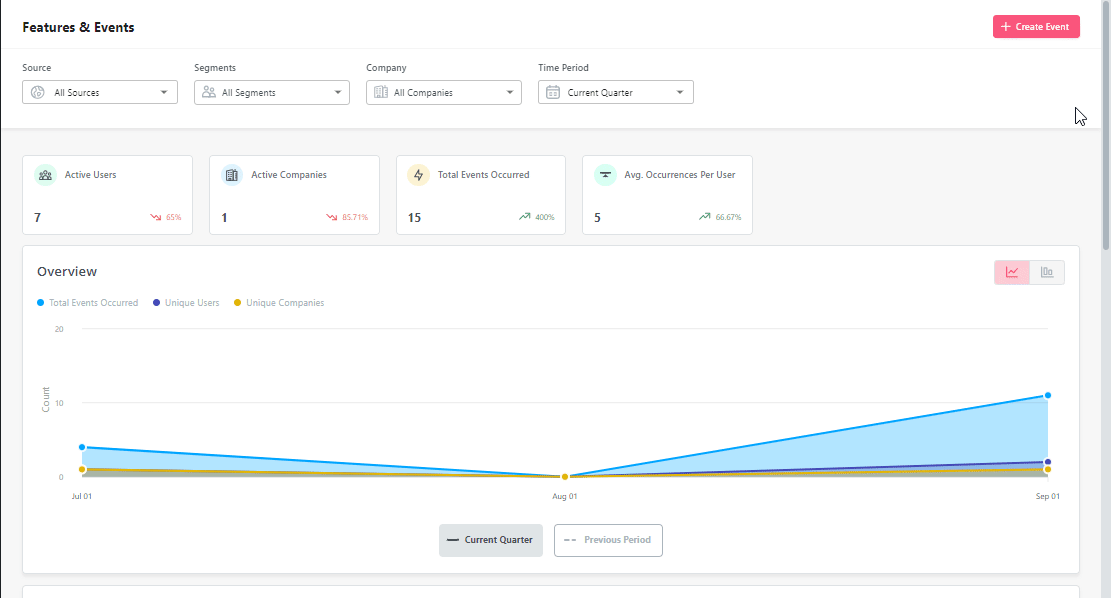
Use feature tags to collect data without coding
There are easier ways of data collection as well, that don’t require any coding or help from the engineering team. One such way is using Userpilot’s feature tags.
These tags help you identify and capture a list of UI elements (or client-server side events). Therefore, you can easily monitor different interactions, like hovers, clicks, or text input.
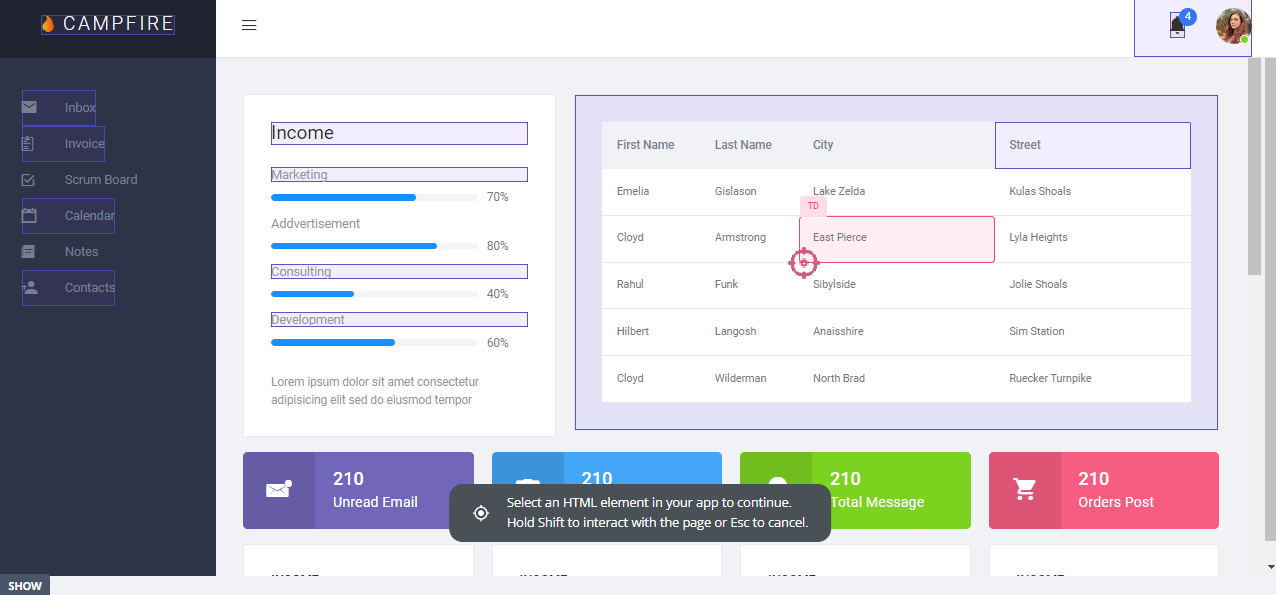
Track multiple events by grouping them
In certain instances, you might want to gather data on a group of events. For example, when new users sign up, they don’t just perform one event for their onboarding and are done with it. Instead, there is a series of multiple events users take as part of their onboarding flows.
For data collection in such situations, Userpilot lets you track a group of events. Considering the onboarding example, this means you can track the completion of all the onboarding tasks by grouping them.
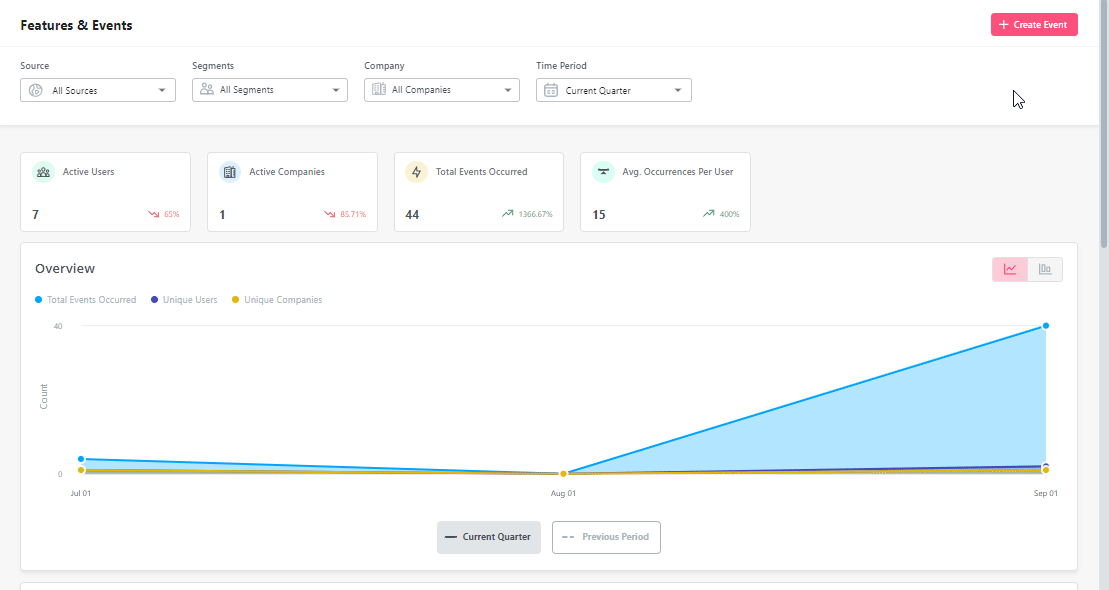
Examples of event analytics use cases for SaaS
Once you’ve completed event tracking and collected the required data, you can move on to the analytics side of things.
There are myriad ways to use event analytics to your advantage. It can help gain insights into product engagement or a better understanding of the reason behind drop-offs – the possibilities are endless! Let’s look at some popular event analytics use cases below.
Optimize user onboarding flow by identifying drop-offs
You can use event analytics to find out why users are just leaving the funnel altogether, i.e. dropping off, instead of achieving their specific goal.
Start by tracking events related to the onboarding flow. Next, to identify drop-off points, conduct a funnel analysis leveraging those events.
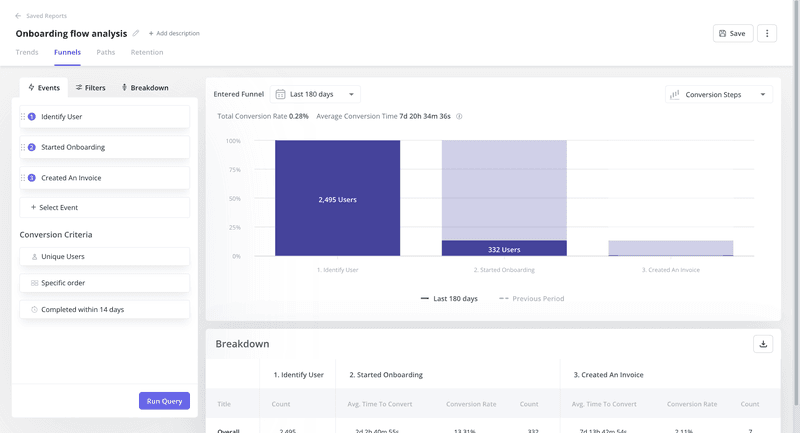
Once you’ve narrowed down the pages where users abandon an action or process, you can visit those pages to further find friction points. Now that the problem is diagnosed work on fixing it and eliminating friction by adding contextual guidance or other creative ways.
Monitor events related to new features to gauge user adoption rate
One of the common event analytics use cases is monitoring feature adoption.
For example, whenever you launch a new feature, how can you know if customers are using and benefiting from it?
One simple way to examine feature adoption is by tagging the new feature or using tracked events. No matter what approach you take, you’ll be able to use a trend dashboard either way to monitor customer engagement with new features.
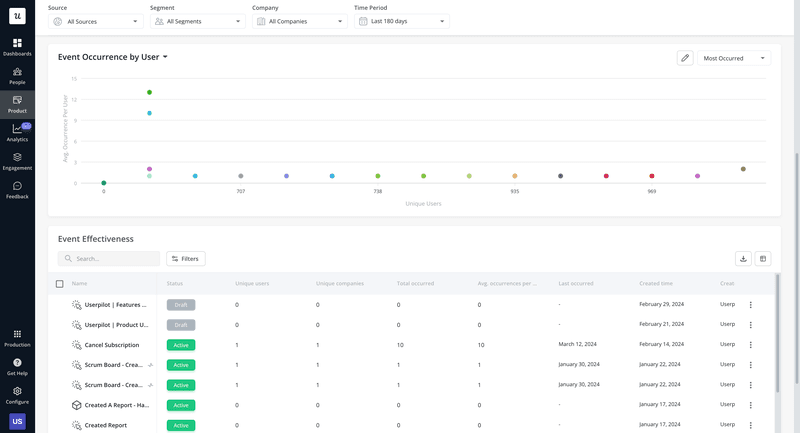
You can also use the core feature engagement dashboard to monitor all the product adoption metrics associated with core features. This way, you’ll be able to tell at a glance which feature isn’t performing well.
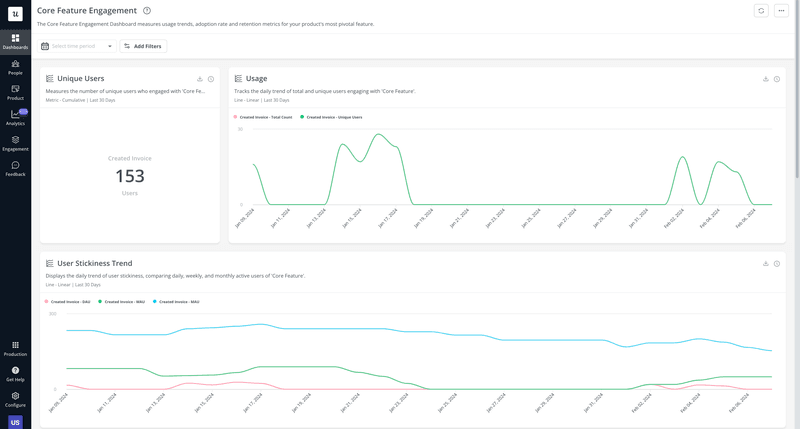
Analyze user behavior to improve conversion rates
Event tracking can help identify opportunities to improve the customer experience and, thereby, boost conversion rates. One way of doing so is by tracking events related to key conversion actions, such as sign-ups, purchases, or subscriptions.
You can use a combination of funnel and path analysis to study the customer conversion journey in detail.
Start by utilizing path analysis to understand user navigation before conversion and then use funnel analysis to track drop-offs to further optimize the most-taken conversion path.
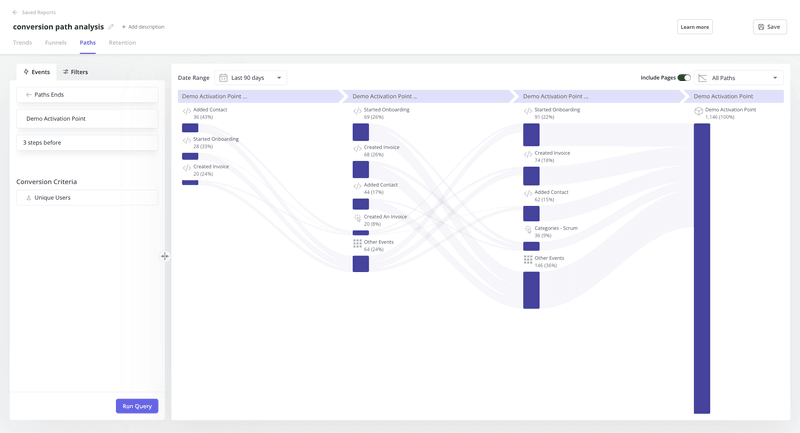
Track user behavior related to upsell efforts
How effective is your upsell strategy? To find out, you can try tracking events relevant to user engagement with upsell prompts or offers and conversion over time (i.e., comparing conversion trends before and after implementing upsell strategies).
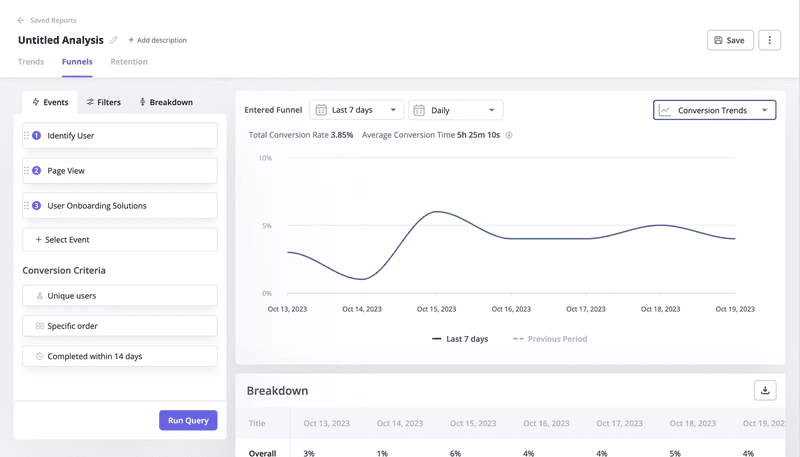
This way, you get to see how your upsell strategy is performing in any given period. If performance falls, you can dive deeper to figure out why.
Map customer journey to improve product design
Sometimes users end up churning because they’re not using your product correctly. Users might be taking the longer, less optimal route to performing an action, which isn’t how you designed the product to be used.
To solve this problem and improve user experience, use path analysis to better understand user navigation across your product. This will help identify pages with high drop-off rates.
Then, you can collect more data, i.e., via in-app surveys, to narrow down issues happening on that specific page.
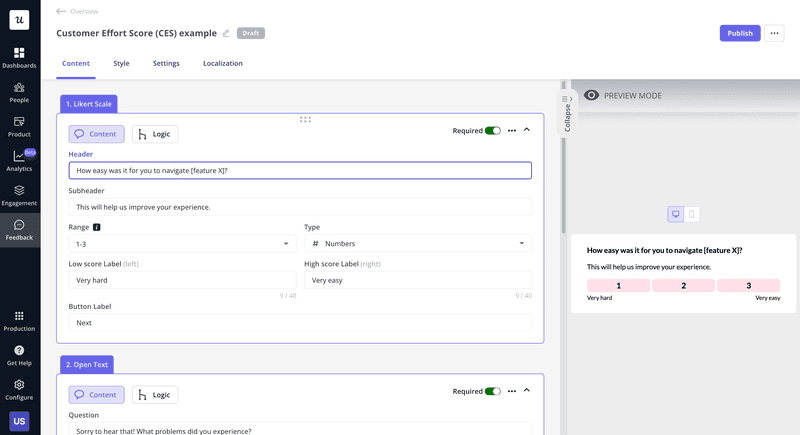
Track user interactions to understand patterns influencing retention
No SaaS company can grow without monitoring retention metrics, such as retention rate among new or power users, product usage, etc.
But simply tracking key performance indicators isn’t enough. You need to be more proactive instead by identifying patterns related to retention, like what feature contributes to a higher retention rate?
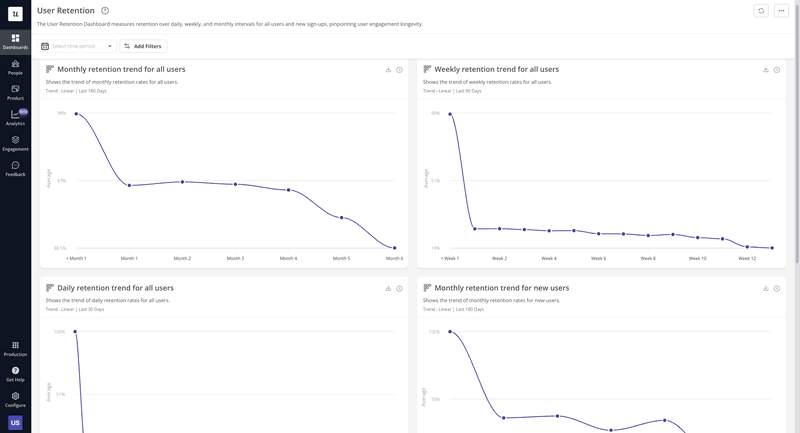
Learning these patterns not only provides insights into user preferences but also allows you to align your retention efforts with the most valuable business metrics.
Monitor how users interact with different features to plan product roadmap
With the help of event tracking and analytics, you can start designing data-backed product roadmaps geared for success.
All you need to do is track engagement with various features of your product or analytics platform. Such event tracking could take on several forms, like analyzing usage patterns, frequency of feature adoption, and user feedback.
Once you’re done, you’ll have tons of data to help prioritize feature development and enhancements in your roadmap.
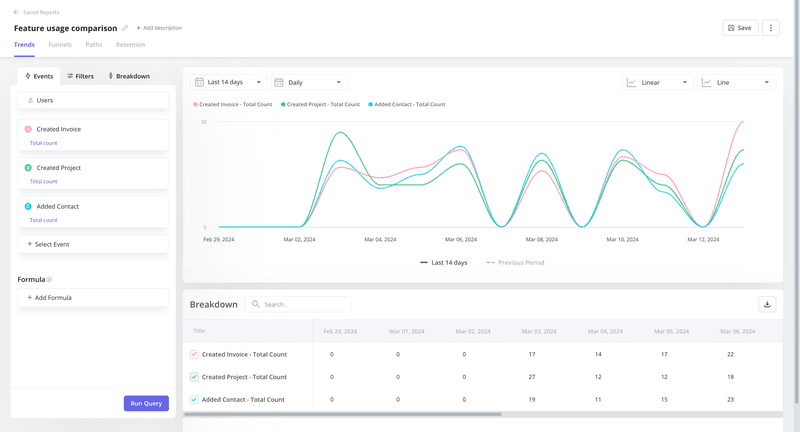
Measure impacts of in-app flow changes
Whenever you change or make an improvement in your product, it’s important to track if it has the desired impact on users or not. A great way of measuring such impact is by using A/B testing.
Let’s look at an example where you’re considering sending out an upgrade prompt. Create two versions of the prompt, one with a GIF and one with a text prompt only.
Then simply use event tracking to find which version of the prompt gets the most engagement. This way, you can collect data that lets you know what users prefer, thereby helping you make well-informed, data-driven decisions for maximum impact.
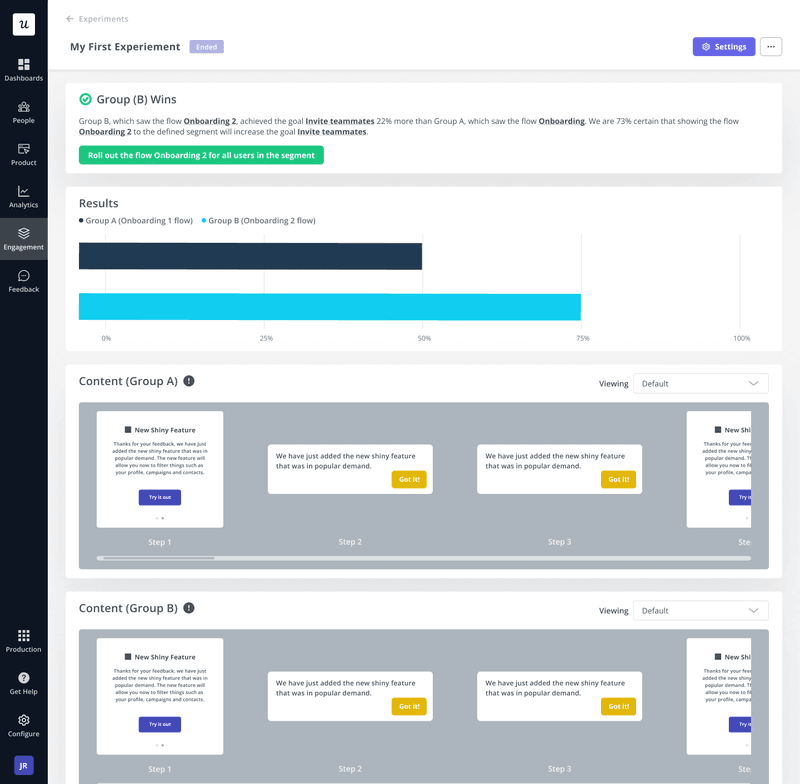
Understand preferences across user segments
Not all user segments like the same things or interact with your product in the same way.
This is why it’s important to learn about different user segment preferences, so you can cater to them accordingly. Failure to do so will result in you showing generic content to your users, ultimately leading to disengaged users.
To learn user preferences, a simple way is by comparing feature usage between any two segments. Next, use these insights to refine value metrics, prioritize feature development, personalize user experiences, etc.
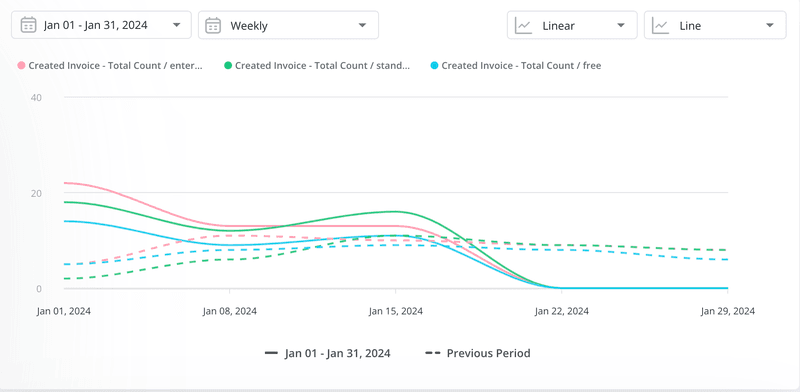
Create targeted marketing campaigns based on user engagement
The last events-based analytics use case will make life for your marketing team easier. By studying user engagement across segments, you can collect data for the team to use in designing personalized marketing campaigns, thereby guaranteeing greater success.
Start by segmenting users based on customer behavior, like disengaged or engaged users, active or inactive users, etc. Then, based on their segment, you can design your campaign accordingly, making it personalized.
For example, to boost conversion rates among inactive users, you could send them live demo offers once they are back in the app.
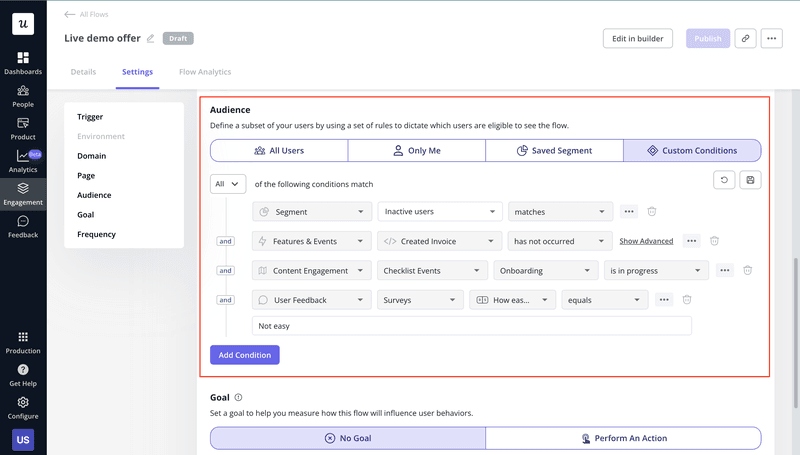
Conclusion
Product teams can’t continue developing features and boosting retention without the right data to support their decisions. This is why event analytics is now a necessity for all SaaS companies looking to understand user behaviors and find opportunities to improve customer experience.
Apart from these benefits, there are several other event analytics use cases to learn from as well. Lucky for you, we’ve discussed the most important ones throughout this article, so you’re all set!
Looking for event based analytics tools? Get a Userpilot Demo and see how you can gain insights into user behavior.







